Best 8 indoor skateboarding parks – Locations, Tips & Events

In the exhilarating world of skateboarding, indoor skateboarding parks stand out as revolutionary arenas where enthusiasts of all skill levels can thrive, irrespective of the whims of weather or the constraints of daylight. These meticulously designed spaces not only offer a haven for year-round skating but also foster a vibrant community, pushing the boundaries of creativity and athleticism.
This article delves deep into the essence of indoor skateboarding parks, from their strategic inception and design to the rich tapestry of experiences they offer. We explore the pros and cons, providing a balanced view of their impact on the skateboarding culture. Whether you’re contemplating building your park, searching for the best indoor spots, or simply curious about the skateboarding phenomenon, this piece offers a comprehensive guide to the indoor skateboarding universe.
Key Takeaways
Indoor skateboarding parks offer a unique blend of benefits that cater to skaters of all levels, ensuring the sport can be enjoyed year-round, regardless of external conditions. Here are the core aspects highlighted:
- Year-Round Accessibility: These facilities allow for skateboarding at any time, offering an escape from the limitations imposed by adverse weather conditions.
- Safe and Controlled Environment: Indoor parks are meticulously designed to prioritize safety, providing well-maintained surfaces and obstacles that minimize the risks of accidents.
- Innovative Designs: With the ability to custom-build the parks, designers can create diverse obstacles that cater to various skill levels, from beginners to professional skaters.
- Community and Cultural Hub: Beyond just skateboarding, these parks act as central points for skaters to meet, exchange ideas, and foster a sense of belonging within the skate culture.
These elements combine to make indoor skateboarding parks not just sports facilities but pivotal platforms for the growth and evolution of skateboarding as a community-driven and inclusive sport.
Join us as we navigate through the ramps, rails, and bowls that make these indoor skateboarding parks a cornerstone of the skateboarding community, highlighting their significance in shaping the future of this dynamic sport.
Table of Contents
Top indoor skateboarding parks in the world
Discovering the best indoor skateboarding parks can transform your skateboarding experience, offering unparalleled opportunities to skate regardless of weather conditions. These parks are celebrated for their innovative designs, extensive facilities, and vibrant communities. Here’s a list of some of the top indoor skateboarding parks around the world, renowned for their quality, atmosphere, and accessibility:
1. The Berrics – Los Angeles, California, USA

The Berrics in Los Angeles stands as a testament to the evolution of skateboarding culture, founded by industry legends Steve Berra and Eric Koston. More than just an indoor skatepark, it’s a digital platform that showcases the best of skateboarding through compelling content and high-profile competitions.
The park itself is a skateboarding paradise, meticulously designed to cater to all styles, from street to transition. Its features are regularly updated to keep the challenges fresh and engaging. Although access is more exclusive, securing an invitation means skating in one of the most influential spots in skateboarding history, where innovation and community converge.
2. House of Vans – London, England
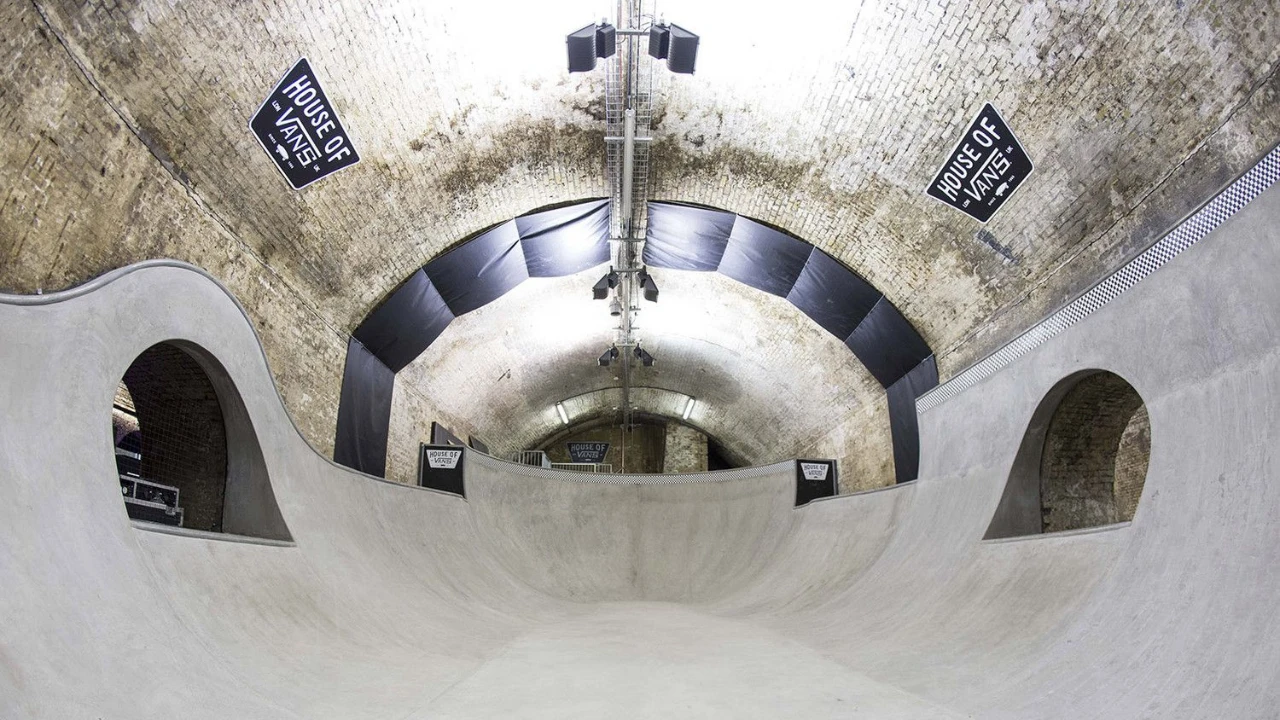
Nestled beneath the bustling streets of London, House of Vans represents a unique fusion of skate culture and creative expression. This subterranean space is not just about skateboarding; it’s a venue where art, music, and film coexist, making it a cultural landmark. The skatepark section is ingeniously designed, offering a variety of terrains that cater to all skill levels.
From smooth bowls to challenging street sections, skaters can find their niche and push their limits. House of Vans also places a strong emphasis on community and education, hosting workshops that inspire the next generation of skateboarders.
3. Skatehalle Berlin – Berlin, Germany
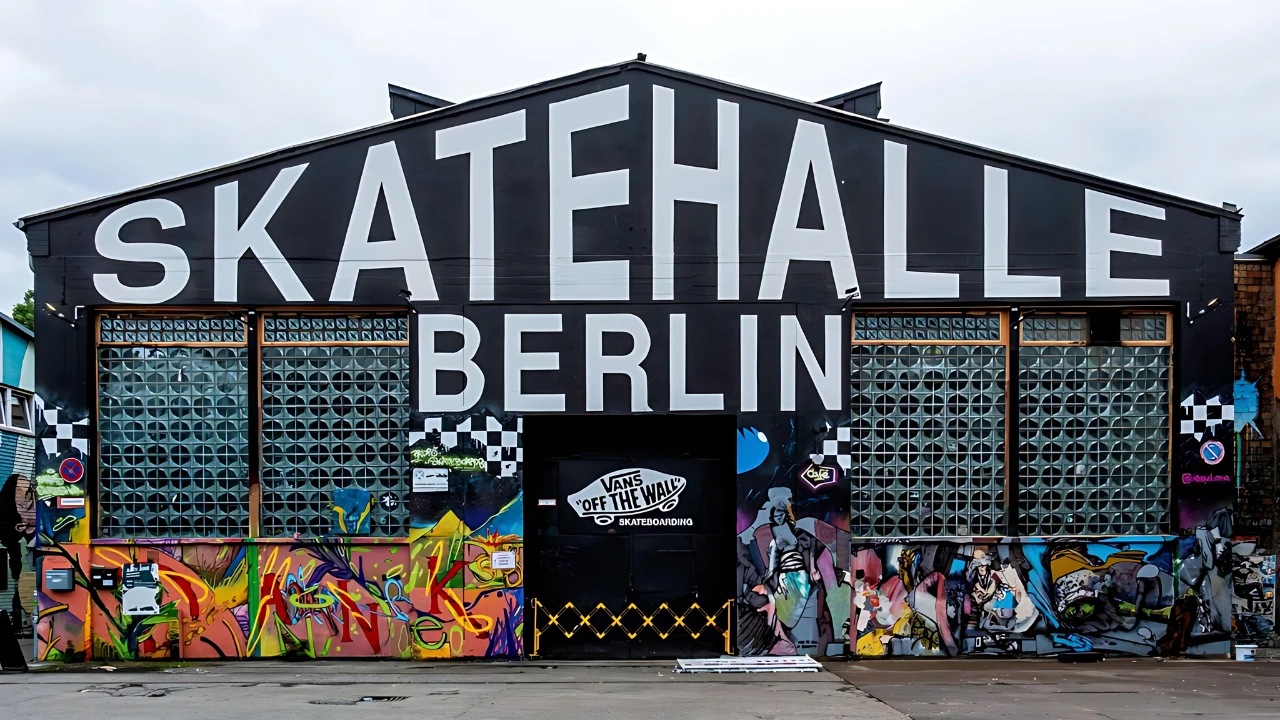
Skatehalle Berlin is a beacon of skateboarding in Germany, offering an extensive array of facilities that make it a premier destination for skaters worldwide. Its layout includes a vast street plaza, vert ramps, and bowls, designed to simulate real-world skate spots. The park’s commitment to inclusivity and progression is evident through its regular hosting of international contests and events that draw talent from across the globe.
Beyond its physical features, Skatehalle Berlin is a community hub, offering lessons and camps to skaters of all ages and abilities, fostering a supportive environment where everyone can grow.
4. Woodward – Various Locations, USA
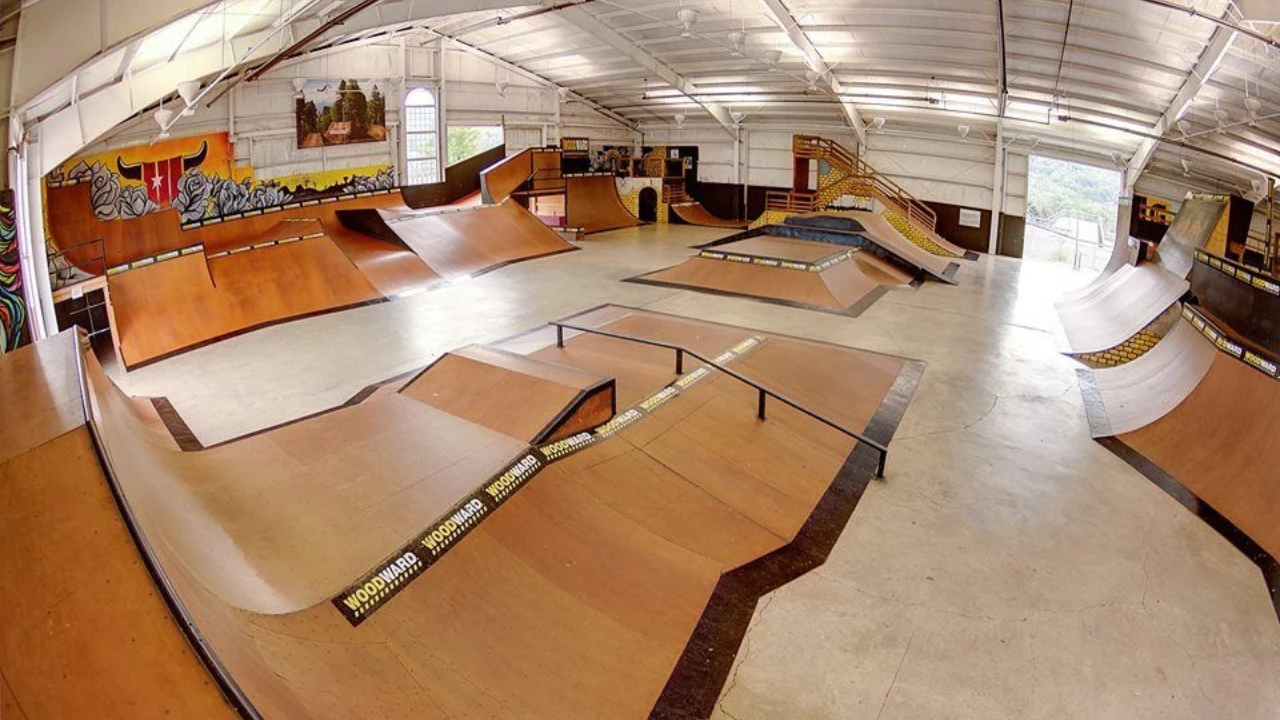
Woodward sets the gold standard for action sports facilities, with locations across the United States. Known for its comprehensive approach to skateboarding, BMX, gymnastics, and more, Woodward provides an unparalleled experience with its innovative parks. Each facility is equipped with indoor parks that feature everything from beginner-friendly areas to professional-level obstacles.
Skaters can take advantage of Woodward’s unique offerings like foam pits and resi-pads to safely learn new tricks. The camps and programs available at Woodward are designed to nurture talent, making it a breeding ground for the next wave of action sports athletes.
5. Area 51 Skatepark – Eindhoven, Netherlands
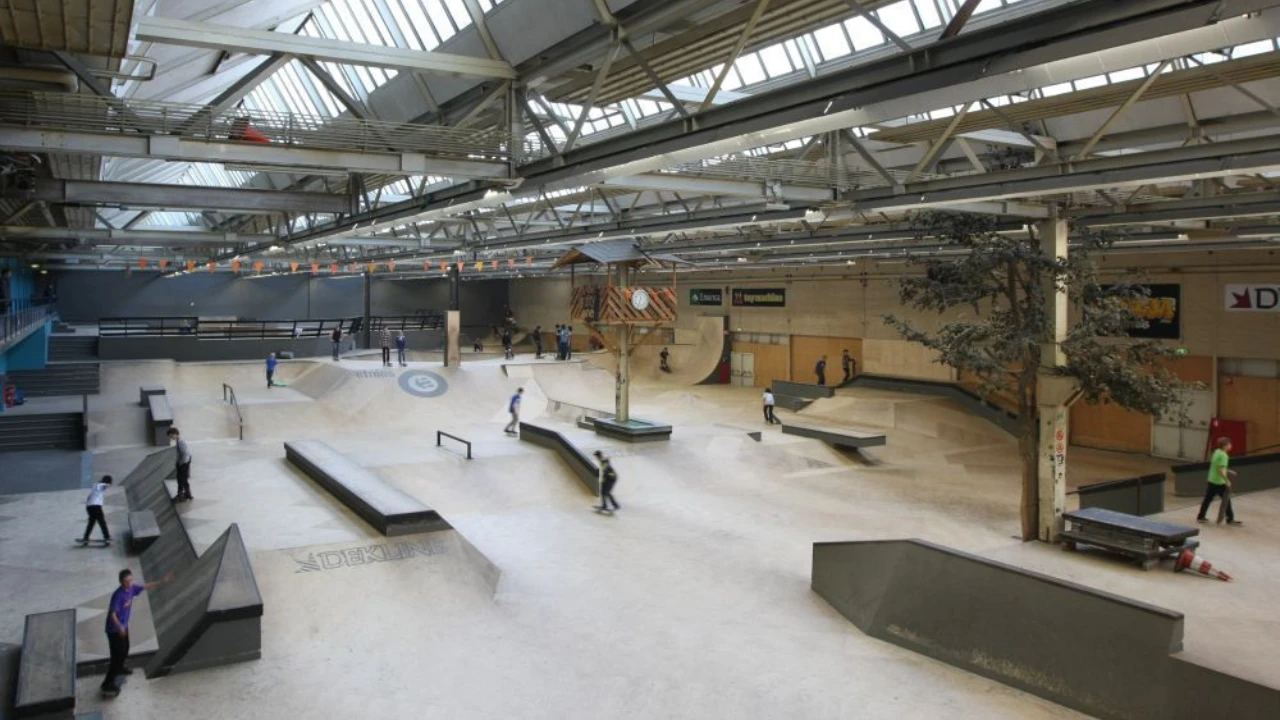
Area 51 in Eindhoven not only stands out for its extensive facilities but also for its vibrant atmosphere that captures the essence of skateboarding culture in the Netherlands. The park offers a wide range of features, including street sections, bowls, and mini ramps, catering to skaters of all preferences and skill levels.
Area 51 is deeply integrated into the local and international skateboarding community, regularly organizing events, competitions, and workshops that bring skaters together. Its commitment to promoting skateboarding as an accessible and inclusive sport is evident through its initiatives to support both amateur and professional skaters.
6. Rampworx Skatepark – Liverpool, England
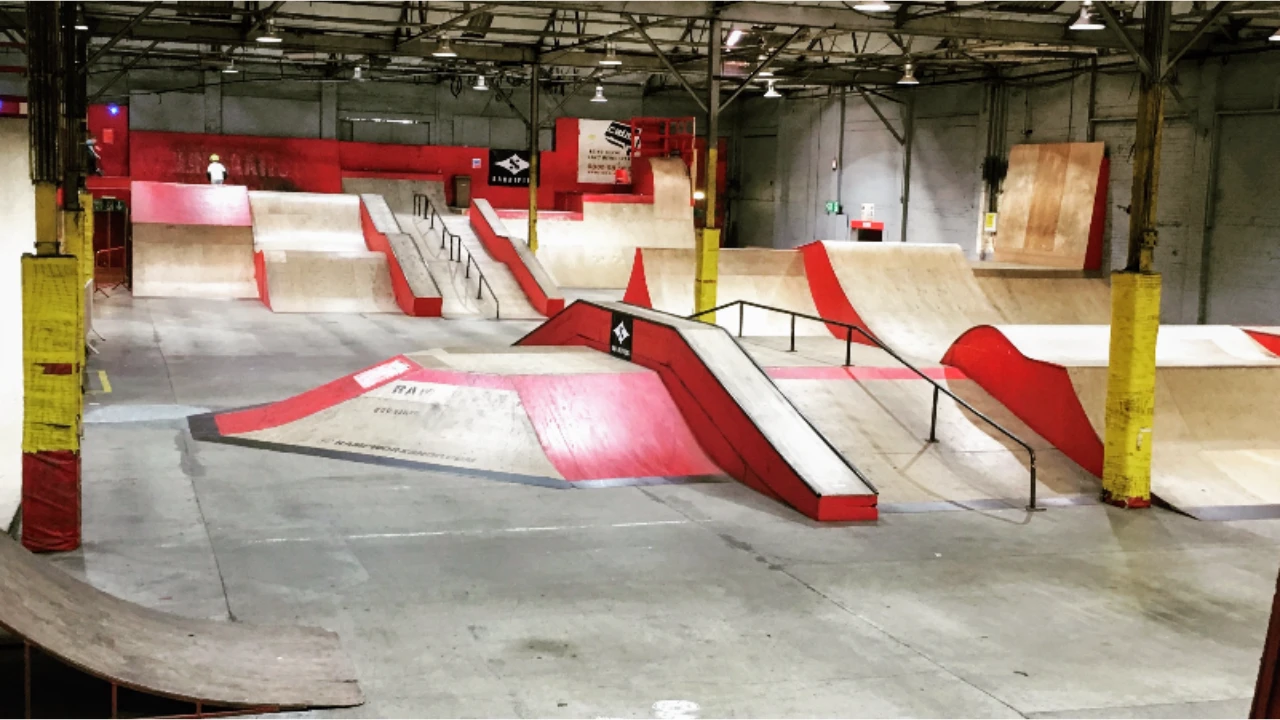
Rampworx in Liverpool is celebrated as the UK’s largest indoor skateboarding parks, a title it lives up to with its impressive array of ramps, plazas, and bowls. The facility is designed to challenge skaters, encouraging them to push their boundaries and explore new styles.
Rampworx is not just about providing a space to skate; it’s about fostering a community where skaters can come together, share experiences, and inspire each other. With a strong focus on safety and progression, Rampworx also offers coaching and workshops, making skateboarding accessible to everyone from beginners to pros.
7. ASB Skatepark – Auckland, New Zealand
ASB Skatepark shines as New Zealand’s premier indoor skate facility, offering a comprehensive skateboarding experience that caters to a wide audience. The park features a mix of street courses, mini ramps, and bowls, designed to mimic the challenges of outdoor skating in a controlled environment.
What sets ASB apart is its dedication to the skateboarding community, providing a space where skaters can gather, share tricks, and participate in competitions. With a focus on inclusivity, ASB offers programs for all ages and skill levels, ensuring that the spirit of skateboarding thrives in Auckland.
8. Shanghai SMP Skatepark – Shanghai, China
SMP Skatepark in Shanghai, while known for its expansive outdoor area, includes an impressive indoor street course that deserves recognition. As one of the largest skateparks in the world, SMP has hosted numerous international competitions, putting it on the map as a global skateboarding destination.
The indoor section is meticulously designed, offering skaters a variety of obstacles that challenge precision and skill. SMP’s impact on the skateboarding scene in China is significant, providing a platform for local skaters to connect with the international community and showcasing the growth of skateboarding in Asia.
Creating an indoor skateboarding park is a significant project that involves careful planning, design, and execution. Here’s a step-by-step guide to help you embark on this exciting venture:
How to create indoor skateboarding parks
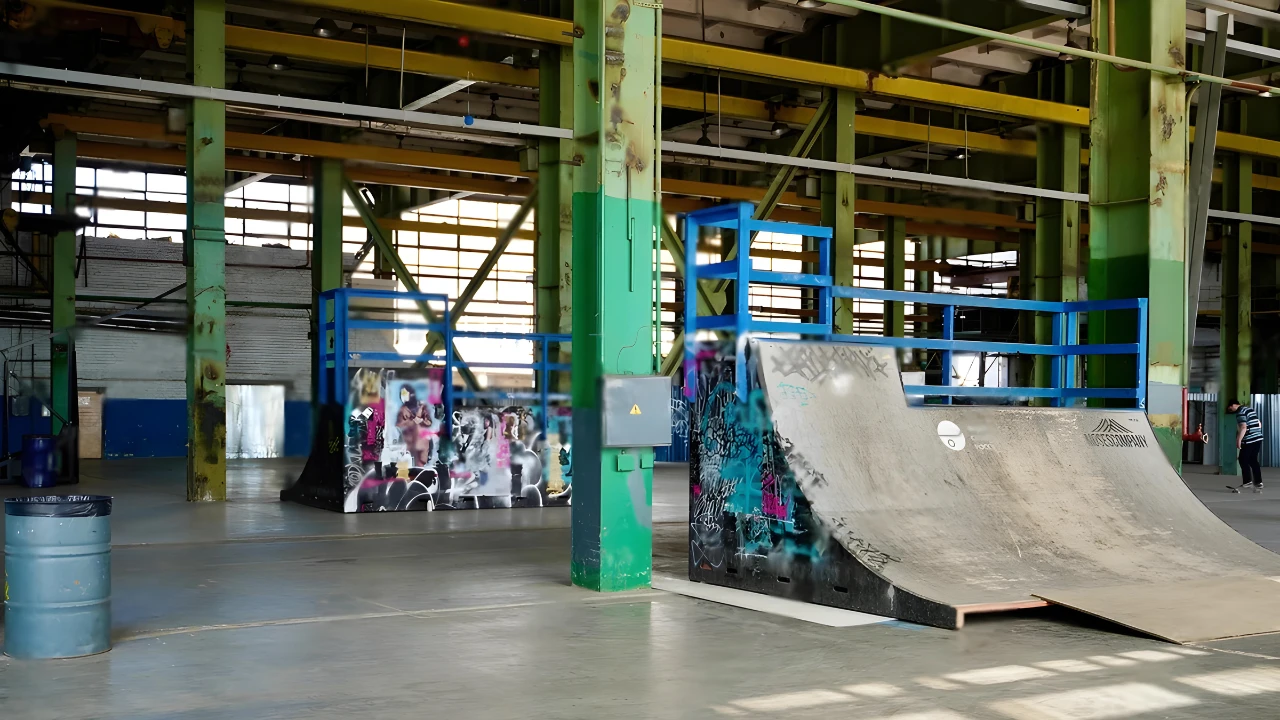
Creating indoor skateboarding parks is a significant project that involves careful planning, design, and execution. Here’s a step-by-step guide to help you embark on this exciting venture:
Step 1: Conceptualization and Planning
Define Your Vision: Start by outlining the type of indoor skatepark you want to create. Consider the target audience, the styles of skateboarding you want to cater to (e.g., street, vert, bowl), and the unique features that will set your park apart.
Research and Feasibility Study: Conduct thorough research on the demand for an indoor skatepark in your chosen location. Look into the local skateboarding community, potential competition, and legal requirements. A feasibility study will help assess the viability of your project.
Step 2: Location and Space Requirements
Find a Suitable Location: Look for a space that is easily accessible and large enough to accommodate your skatepark design, including areas for spectators, restrooms, and possibly a retail space. Industrial areas or warehouses can be ideal due to their open space and high ceilings.
Lease or Purchase Property: Secure the location through leasing or purchasing. Make sure to negotiate terms that align with your project’s long-term goals.
Step 3: Design and Layout
Hire a Skatepark Designer: Engage a professional skatepark designer or an architect experienced in skatepark projects. Their expertise will be invaluable in creating a functional and safe layout.
Design the Park: Work closely with the designer to translate your vision into a practical design. Consider the flow of the park, the variety of obstacles, and how they cater to different skill levels. Incorporate areas for beginners, intermediate, and advanced skaters.
Step 4: Legalities and Insurance
Obtain Necessary Permits: Navigate the legal requirements for building an indoor skatepark in your area. This may include zoning permits, building permits, and safety inspections.
Insurance: Secure comprehensive insurance coverage to protect your business and your patrons. Liability insurance is crucial for addressing accidents or injuries that may occur.
Step 5: Construction
Select a Construction Company: Choose a contractor with experience in building skateparks or similar sports facilities. Their expertise will ensure the park is built to safety standards and specifications.
Oversee Construction: Monitor the construction process closely to ensure that the work aligns with your design and quality expectations. Be prepared to make adjustments as needed.
Step 6: Operations and Management
Hire Staff: Recruit a team to manage the day-to-day operations of the skatepark. This includes maintenance staff, instructors for skateboarding lessons, and administrative personnel.
Set Up Services: Consider offering skateboarding lessons, equipment rental, and repair services. A concession stand or a retail area selling skateboarding gear can also add value.
Marketing and Community Engagement: Develop a marketing plan to promote your skatepark. Engage with the local skateboarding community through events, competitions, and social media to build a loyal customer base.
Step 7: Opening and Beyond
Grand Opening: Plan a grand opening event to generate excitement and attract skaters. Invite local skaters, professionals, and media to create buzz.
Gather Feedback and Iterate: After opening, gather feedback from your patrons to identify areas for improvement. Be open to making changes to better serve your community and ensure the long-term success of your indoor skatepark.
Creating an indoor skateboarding park is a complex but rewarding endeavor. With careful planning, a passion for skateboarding, and a commitment to your community, you can create a space that inspires and entertains skaters for years to come.
Pros and cons of indoor skateboarding parks
Indoor skateboarding parks offer a unique environment for skaters, providing advantages over outdoor parks, but they also come with certain drawbacks. Here’s a look at the pros and cons:
Pros
- Year-Round Access: The most significant advantage is the ability to skate any day of the year, regardless of the weather. Rain or shine, cold or hot, indoor parks provide a consistent environment for skateboarding.
- Safe and Controlled Environment: Indoor parks are designed with safety in mind, offering well-maintained surfaces and obstacles. This controlled environment reduces the risk of accidents caused by external factors like uneven surfaces or debris.
- Innovative and Varied Design: Indoor parks can be custom-built to offer a wide variety of obstacles, including ramps, bowls, and street sections that cater to all skill levels, from beginners to pros.
- Community and Culture: They become hubs for the skateboarding community, offering a space for skaters to meet, exchange tips, and foster a sense of belonging. This can be particularly beneficial for younger skaters looking for role models and guidance.
- Organized Events and Competitions: Many indoor parks host events, competitions, and workshops, providing skaters with opportunities to showcase their skills, learn new ones, and connect with the broader skateboarding community.
Cons
- Cost: Access to indoor parks usually comes at a price, either in the form of entry fees or membership dues. This can be a barrier for skaters who are used to free access to public outdoor parks.
- Crowding: Popular indoor parks can get crowded, especially during weekends or school holidays. This can limit the amount of space available to practice and may lead to longer waits for popular obstacles.
- Limited Space: While outdoor parks can sprawl over large areas, indoor parks are confined by the size of the building. This limitation can restrict the number and size of obstacles that can be built.
- Artificial Experience: Some skaters prefer the authenticity of street skating or the natural environment of outdoor parks. Indoor parks, by contrast, can feel artificial or less challenging to those who thrive on the unpredictability of outdoor terrains.
- Location and Accessibility: Depending on where you live, finding an indoor skatepark might be difficult. Urban areas are more likely to have them, but skaters in rural or suburban areas might have to travel significant distances.
Indoor skateboarding parks offer a fantastic alternative for skaters to practice and enjoy their sport year-round. However, the decision to skate indoors versus outdoors will depend on individual preferences, priorities, and access to facilities.
Final thoughts about indoor skateboarding parks

In conclusion, indoor skateboarding parks represent a significant evolution in the skateboarding landscape, offering skaters a unique blend of accessibility, safety, and community. These parks not only provide a refuge from the unpredictability of outdoor elements but also a platform for skaters to refine their skills, connect with peers, and express themselves creatively within a supportive environment. While challenges such as cost and space limitations exist, the benefits—ranging from year-round access to the cultivation of a vibrant skateboarding culture—far outweigh these hurdles.
As skateboarding continues to grow in popularity and influence, indoor skateboarding parks will undoubtedly play a pivotal role in shaping the future of the sport. Whether for seasoned professionals or newcomers to the skateboarding scene, indoor skateboarding parks offer a dynamic and inclusive space to explore the limits of what can be achieved on four wheels and a board, ultimately driving the sport forward into new and exciting territories.
